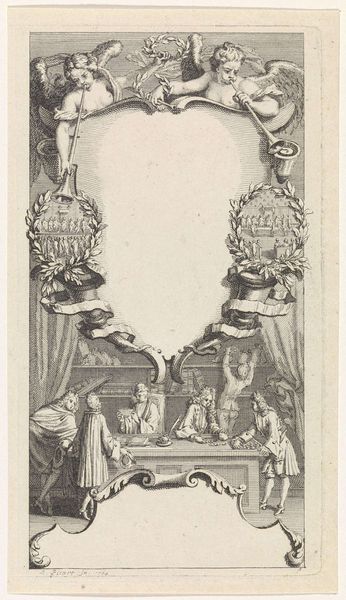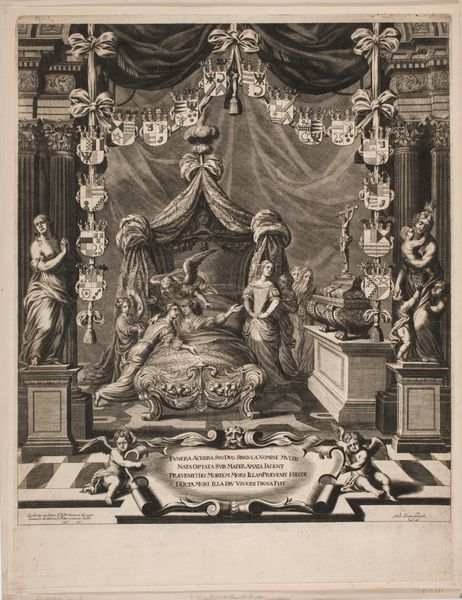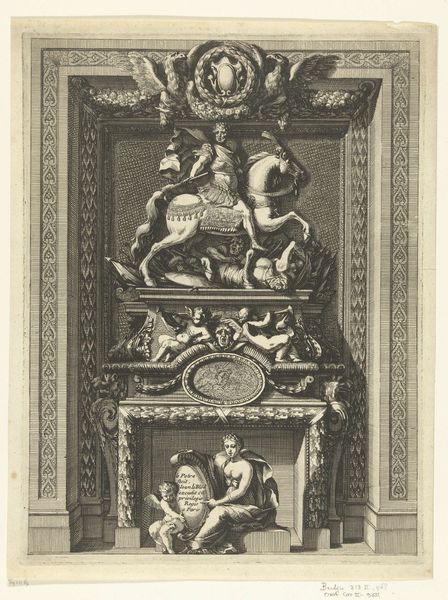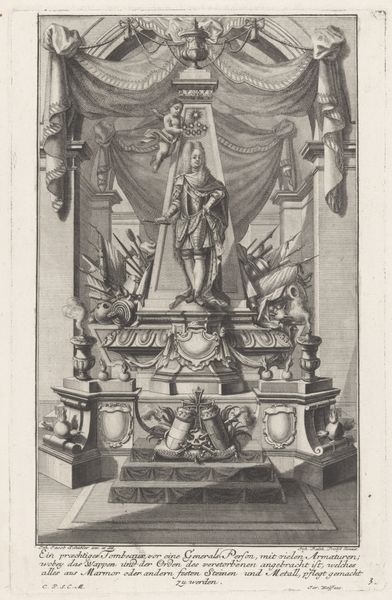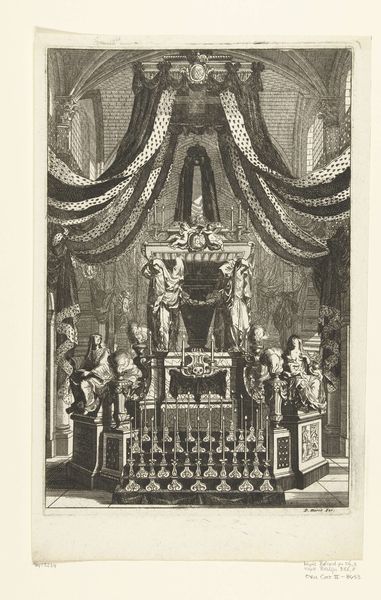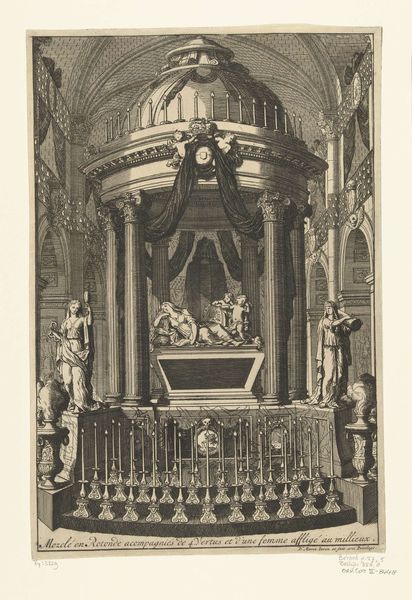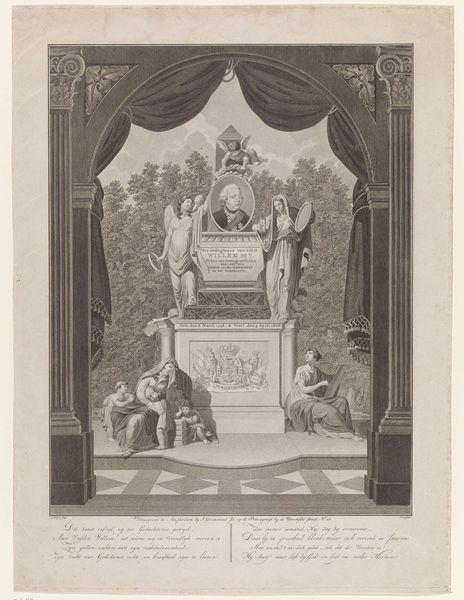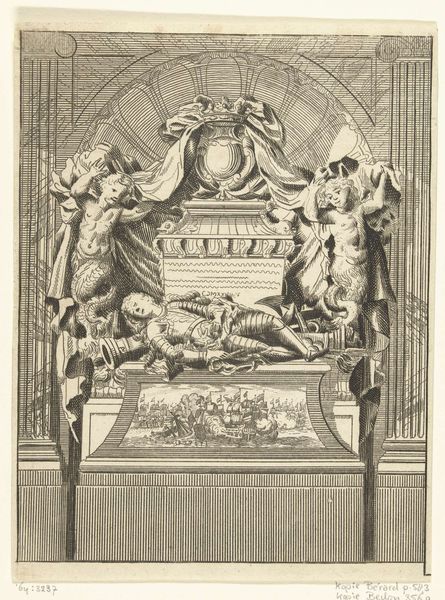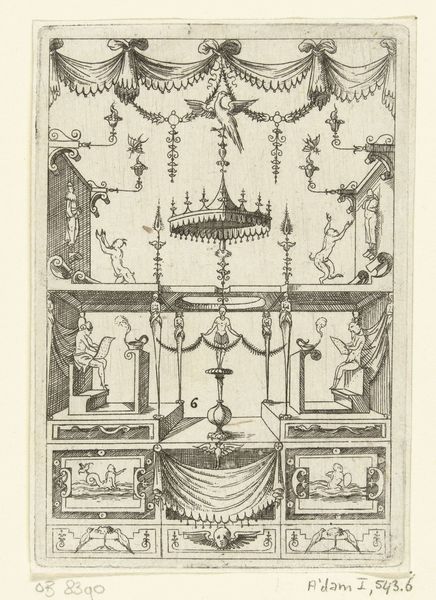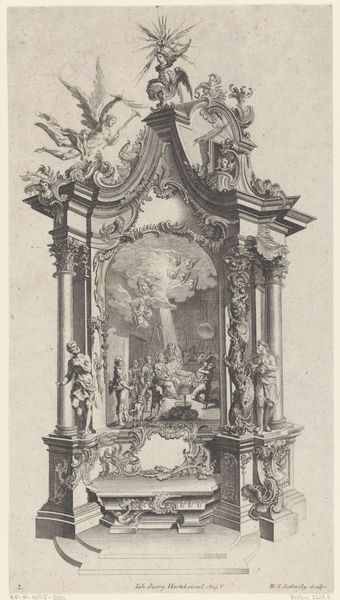
Dimensions: height 280 mm, width 184 mm
Copyright: Rijks Museum: Open Domain
Editor: This print, "Mausoleum voor een koningin of prinses," is from before 1800 and its maker is anonymous. It’s quite striking, full of figures and symbols, but it definitely has a somber feel to it. How do you interpret the imagery? Curator: It is certainly laden with symbolism. Notice how the draped fabric mimics a proscenium arch, immediately setting a theatrical tone. But it's not simply theater; it is, as the title suggests, a constructed space of remembrance. Do you see the skulls flanking the bottom corners? They act as *memento mori*, constant reminders of mortality's presence. Editor: Yes, they're hard to miss! And the clocks just above, are they alluding to time slipping away? Curator: Precisely. Each element contributes to this complex allegory. Clocks symbolize the fleeting nature of time. Consider also the idealized figures surrounding what seems to be a portrait of the deceased. Who do you think they might be? Editor: They appear to be virtues or perhaps mourners, eternally guarding the memory of the queen or princess. Curator: That's a very astute observation. Baroque art often employs personification to give abstract ideas concrete form. It is intriguing to consider the cultural memory encoded within this print, and what it tells us about how power and loss were commemorated. What is your impression? Editor: It's powerful how all these elements combine to create such a poignant and multi-layered statement about grief, memory, and legacy. I hadn't initially grasped all the symbolic connections. Curator: Visual symbols help us navigate emotions. Understanding that allows us to better decode not just the past but how we process grief in the present, as well.
Comments
No comments
Be the first to comment and join the conversation on the ultimate creative platform.
